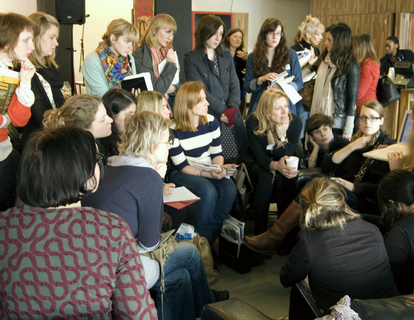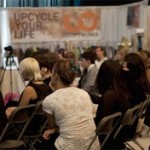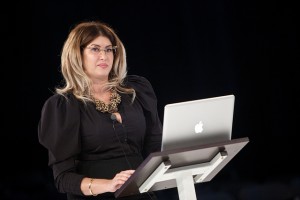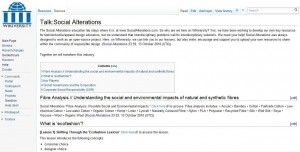| Lindsey, David Suzuki Foundation
Q: Does the David Suzuki Foundation have any plans to launch a consumer awareness campaign on the impacts of the fashion industry? Similarly to the sustainable seafood initiative?
A: Not at this time, we are focusing on improving the policies of the beauty and cosmetics industry and informing consumers on the toxics and chemicals in their personal care products
Paul Raybin, Air Dye
Q: Can you tell me more about the air dyeing process and the benefits?
A: AirDye reduces water consumption by almost 95%. The conventional textile dyeing industry is a major contributor to water pollution worldwide, so Air Dye is focusing on improving this and providing the industry with a solution. They also have developed an inventory system, where they only make what is sold to reduce waste, water consumption and pollution
Mark Trotzuk, Boardroom Eco Apparel – commenting on the question
His company is a Bluesign brand member, so the manufacturing facilities adhere to the highest environmental standard for textiles in the world and are certified. Water, energy and carbon consumption is reduced. His company works to reduce the environmental impacts at each stage of the garment life-cycle, but this is not easy. It is also expensive to have the facilities certified.
Myriam Laroche, President, Eco Fashion Week
Her biggest focus is on teaching consumers to reuse clothing and buy vintage/second-hand clothing. She has reduced her own impact by buying less, and she feels that consumers can all do their part by starting with buying one less item, or buying vintage clothing instead of new
Question from Nicole Bridger to Jeff Garner on how to inspire change in the industry
Jeff, there needs to be more awareness, he is working to inspire other designers through his own practices
Paul Raybin, Air Dye
Q: Do you have any samples of the air dye technology in use?
A: Designers can take the technology and imagine it in their own way. It is a way to reduce material use. You can take the fabric and turn it inside out, so designers can be innovative with how they use it
It is a way to reduce water consumption and pollution. With an example from China on the scope of the problem, 50% of China’s water supply is unsuitable for drinking AND 3.5 trillion gallons of water are polluted from dyeing. In conventional dying, water is used as a solvent to carry the dyes. For “Solution dyes”, the dye is injected into the fibre, to create prints, you need to weave fibres. With the air dye technology, you don’t make the fabric/product unless it is being consumed – this reduces pollution.
Q: Nicole asks Jeff about his work with natural dyes
A: Jeff Garner, Prophetik grows his own plants on his Tennessee farm. Japanese indigo is used to dye his fabric. This process is labour intensive
He has a team of two women who work specifically on the natural dyeing process. He also has a community garden where they grow the plants for the dyes
Q: How do you set the natural dyes so that they do not run and last a long time?
A: we use hemp fabric, so this absorbs the dyes well. We also use vinager to hold the dyes in place. But, each piece is unique and different because natural dying is not consistent and it is done by hand. Depending on the air temperature, and if it was dyed during winter or summer, the gradient also changes. This creates a story behind the garment that he can tell to his customers.
Q: Asked to the entire panel, do you encounter regulations and do you need to work with governments?
A: Summer Rayne Oaks, she is interested in finding local material sources and has also created a global network for fabric suppliers and designers (Source4Style). She is dealing with regulators for this initiative, because integrating the duty fees across boarders affects the prices of the materials. For example the price of organic cotton vs. silk from India is different, but they also have different duty fees. She is working with industry associations in the United States, who then liaise with governments on regulations and policies
A: Myriam Laroche, she is working with the regional government, Vancouver Economic Development Commission, they are a major supported, along with the City of Vancouver, for ECO Fashion Week. |













